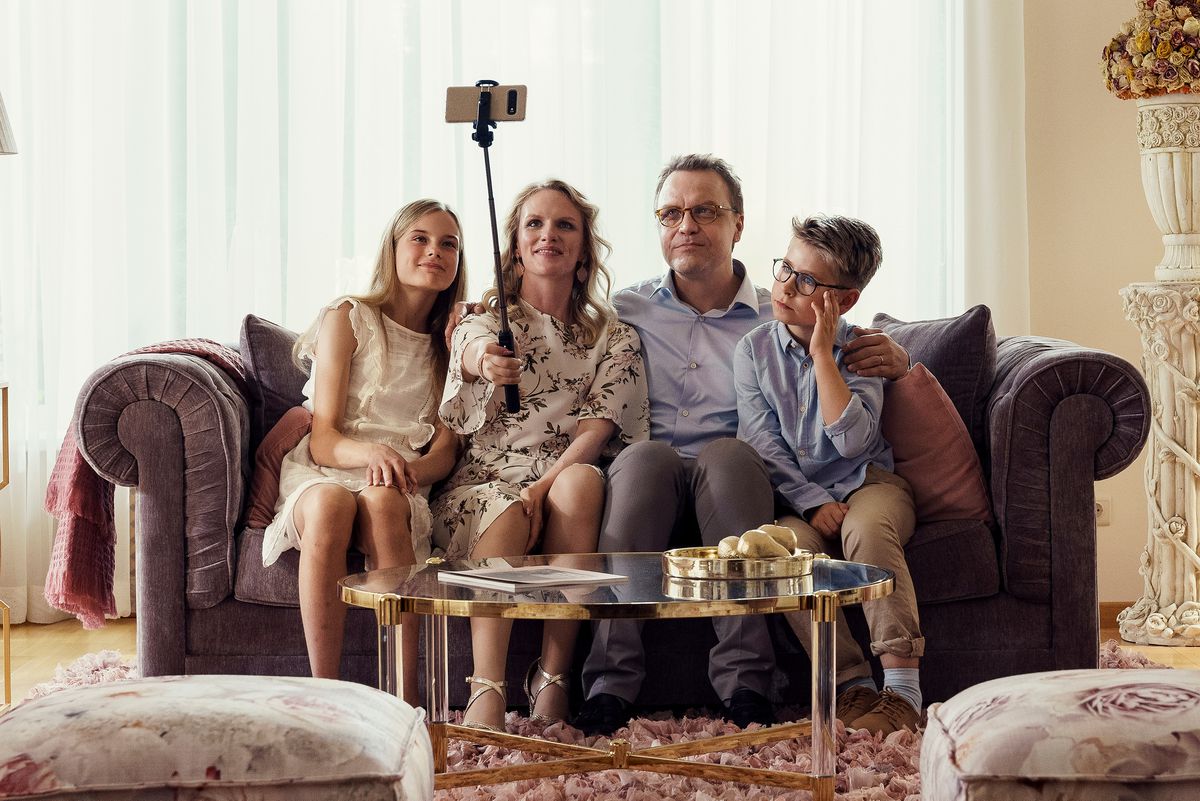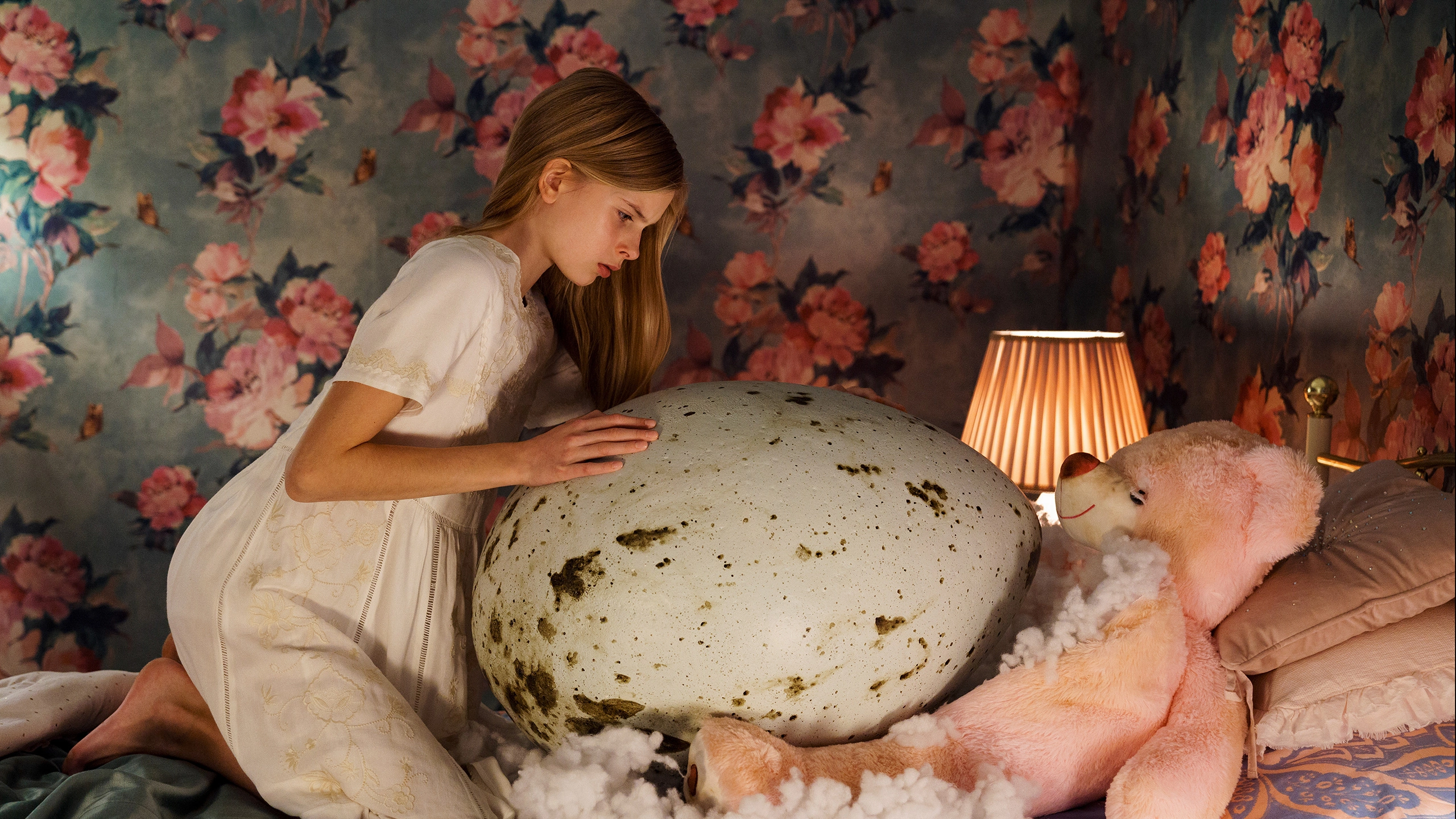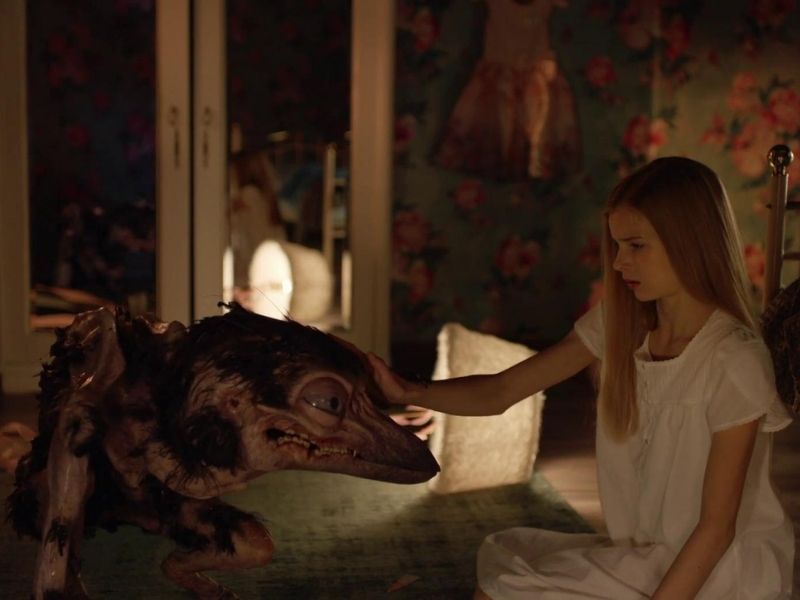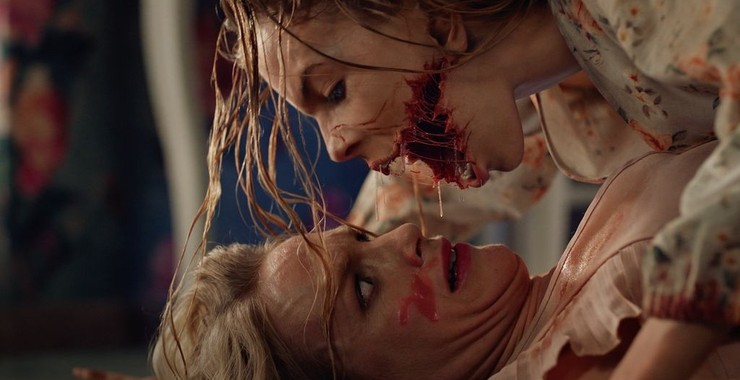Hatching is a Finnish horror film that modernizes the European changeling story. The 2022 horror film was directed by Hanna Bergholm and written by Ilja Rautsi. The film incorporates psychological and body horror elements, doppelganger mythos, modern anxieties around social media, and the social pressure to have the “perfect” family and life, to the fairy changeling trope.
Social Media “Perfect”

The film opens on an impressive note with foreshadowing, symbolism, and visual commentary that sets up the premise of the film. The family appears “perfect”. Mother, played by Sophia Heikkilä, is shooting a video for her ‘Mommy Blog’, and tags them as the “lovely life of a normal Finnish family.” Her idea of normal is a socially conservative one: nuclear family with blonde homemaker, tied-neck-sweater breadwinner, perfect-blonde-gymnast daughter, and ‘good ole boy’ son. Mother and daughter are in delicate white dresses, straining to appear casual despite their formalness. Father and son are clad in neutral khakis and collared shirts, obviously handpicked to be set pieces. Their living room is ‘magazine shoot’ immaculate, complete with sun windows, pastel colors, flower arrangements, Greek statue décor, and crystal furnishings. The “perfect” family presses their faces together on their “perfect” couch to document their “perfect” life.
Tinja opens the window after the video shoot. On cue, a raven flies in and begins destroying Mother’s perfect living room. The sequence culminates in the crystal chandelier, the centrepiece of the living room, crashing into the glass coffee table. The raven unceremoniously flies back out of the window, its ominous message complete. The movie continues in that thematic vein.
The Loss of Innocence
The cinematic imagery is that of European folklore, complete with a fantasy audio narration overlaid over the film’s audio. The woods act as a supernatural boundary between civilization and the ‘unknown’ wild. The juxtaposition of blonde Tinja in her nightgown and rain boots against the foggy, bleak, and grey woods is compelling. In the woods, she comes upon the same raven, now hurt. After trying to comfort the raven, she decides to put it out of its misery. She proceeds to bash the bird repeatedly with a rock in an uncharacteristic rage. Tinja releases her pent-up rage stemming from Mother’s cold, calculated pressure for perfection. She has officially lost her innocence in the process.

Death and rebirth motifs are used to remix the traditional changeling story. Tinja realizes the raven has laid an egg. In her guilt, she takes the egg, intending to hatch it. She places the egg inside a pink teddy bear, where it eventually outgrows the space, bursting the teddy open and scattering fluff everywhere. This is a clever nod to the chestbursters from Alien. Unbeknownst to Tinja (and the audience), she has hatched her doppelganger. The creature initially resembles a human-sized, baby bird with scattered feathers and unblinking blue eyes.
Doppelgangers & Repressed Emotions

The doppelganger acts on Tinja’s repressed emotions, attacking symbols of her adolescent problems. The double attacks her jealous brother for tattling, her gymnast rival for outperforming her, a stepsibling for stealing Mother’s superficial attention, and finally, Mother herself for her impossible desire for perfection from Tinja. All the while, Tinja becomes more bird-like, while the doppelganger becomes more human. The changeling trope is complete once the doppelganger replaces Tinja permanently at the movie’s ending.
Social Media is a Cardboard World

The lovely life is all a lie. As artificial as it is superficial. And one only needs to look at the forced smiles, the unlived-in living room, and the cold formality between ‘Mother’ and the rest of the family. We see Mother’s lukewarm, often cold reception to her son, Matias, who clearly yearns for her affection. In turn, Matias wears a simplified cardboard cutout as a mask. The mask is white and unadorned save for two eye holes. Cardboard is an important symbol in the film, symbolizing the cardboard world that modern people live in. We believe our homes are impenetrable castles. But as the destruction of Tinja’s cardboard window and Matias’ cardboard mask show us, our sense of safety and order is easily disrupted. Hatching shows us that the modern version of the cardboard world trope is social media. Social media offers a chance to gain fame and social admiration from carefully curated content, and yet, that fame is easily destroyed by impinging reality. Mother and Tinja’s worlds are destroyed in parallel. Tinja’s by the doppelganger, and Mother’s by the loss of her social image.





